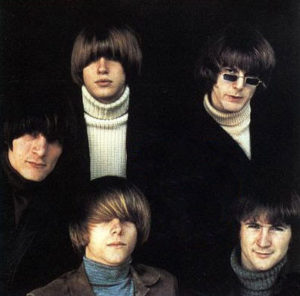
Roger McGuinn (nee: Jim McGuinn)
Born: July 13, 1942, Chicago, Illinois
Founding Member: 1964 - 1973; 1989 - 1991; 2000
Member of the Silent Generation
Gene Clark (nee: Harold Eugene Clark)
Born: November 17, 1944, Tipton, Missouri
Died: May 24, 1991, Sherman Oaks, California
Founding Member: 1964 - 1966; 1967; 1972 - 1973; 1991
Member of the Boom Generation
David Crosby
Born: August 14, 1941, Los Angeles, California
Founding Member: 1964 - 1967; 1972 - 1973; 1989 - 1991; 2000
Member of the Silent Generation
Michael Clarke (nee: Michael James Dick)
Born: June 3, 1946, Spokane, Washington
Died: December 19, 1993, Treasure Island, Florida
Founding Member: 1964 - 1967; 1972 - 1973; 1991
Member of the Boom Generation
Chris Hillman
Born: December 4, 1944, Los Angeles, California
Founding Member: 1964 - 1968; 1972 - 1973; 1989 - 1991; 2000
Member of the Boom Generation
Kevin Kelley
Born: March 25, 1943
Died: April 6, 2002, Hollywood, California
Member: 1968
Member of the Boom Generation
Gram Parsons (nee: Ingram Cecil Connor)
Born: November 5, 1946, Winter Haven, Florida
Died: September 19, 1973, Joshua Tree, California
Member: 1968
Member of the Boom Generation
Clarence White (nee: Clarence LeBlanc)
Born: June 7, 1944, Lewiston, Maine
Died: July 14, 1973, Palmdale, California
Member: 1968 - 1973
Member of the Boon Generation
Gene Parsons
Born: September 4, 1944, Morongo Valley, California
Member: 1968 - 1972
Member of the Boom Generation
John York
Born: August 3, 1946
Member: 1968 - 1969
Member of the Boom Generation
Skip Battin (nee: Clyde Battin)
Born: February 18, 1934, Gallipolis, Ohio
Died: July 6, 2003, Salem, Oregon
Member: 1969 - 1973
Member of the Silent Generation
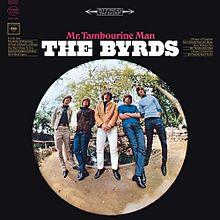
The Byrds created Folk-Rock in 1965 when they recorded a version of "Mr. Tambourine Man," a song written by Bob Dylan, in the style of The Beatles. As a matter of fact, they had begun as folk singers who performed in various combos that worked the coffeehouse circuit during the early 1960s, including the Limeliters, the Chad Mitchell Trio, Les Baxter's Balladeers, and the New Christy Minstrels. When The Beatles came to America early in 1964, founding members Jim McGuinn (who later changed his name to Roger) and Gene Clark, who were performing separately at the time, each became fans of the new group from Liverpool, and began performing acoustic versions of their songs. The two met one evening at the Troubador club in Los Angeles, and quickly formed a duo. They were later joined by David Crosby, who provided harmonies. They formed a trio called the Jet Set. Later in the year, Michael Clarke and Chris Hillman were added to the group.
They spent 1964 perfecting their sound. Inspired by The Beatles, they blended their pop sound with their own folk roots to create a new sound, which took root in 1965. They became famous for taking songs written by Bob Dylan and reinterpreting them in their own new style. Dylan himself was blown away when he heard The Byrds' recording of "Mr. Tambourine Man" - as he said, "You can dance to it." They would go on to record many more Dylan songs, as well as ones they wrote themselves. It has been said that it was The Byrds who inspired Dylan to "plug in" and go electric later that same year. In addition, The Beatles were quoted as saying that The Byrds were their favorite American band. In fact, they were one of the few contemporary bands to exercise a significant influence on The Beatles.
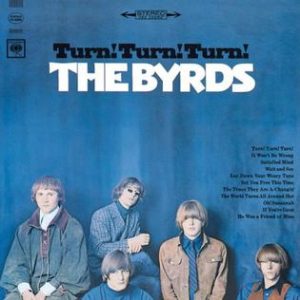
The Byrds' sound quickly changed over the next three years. In 1965, they released two folk-rock albums, Mr. Tambourine Man and Turn! Turn! Turn! Most of the songs on these albums, Dylan covers and band originals alike, feature Jim McGuinn's signature jangly twelve-string guitar. In addition to the title song, the first album features standout tracks "I'll Feel a Whole Lot Better," "Here Without You," "The Bells of Rhymney," "All I Really Want to Do," "I Knew I'd Want You," "Chimes of Freedom," and "We'll Meet Again." "Bells" was the song that inspired one of George Harrison's best compositions, "If I Needed Someone," which appeared on Rubber Soul a few months later. "Chimes," a Bob Dylan song, is one of the best protest songs from the era. Unlike most such songs, which speak out against a particular injustice, the chimes in this song flash for pretty much anyone who is dispossessed or unjustly treated.
"We'll Meet Again" is an interesting song. It began as a sentimental song from World War II that was popular in England at the time. The Byrds updated it with a shot of rock and roll, bringing it forward to the 1960s and giving it new life. Another folk rock group, The Turtles, recorded their own version in 1966.
Turn! Turn! Turn!, released a few months later, is pretty much more of the same. Rather than kick the album off with yet another Dylan composition, they chose to use the title song, a Pete Seeger composition, with lyrics lifted from the Book of Ecclesiastes in the Old Testament. In fact, the entire album is less reliant on Dylan, as it only includes two of his songs, "Lay Down Your Weary Tune" and "The Times They Are a-Changin'," neither of which was originally released as a single. In addition to the title song, standout tracks include "It Won't Be Wrong," and "Set You Free This Time."
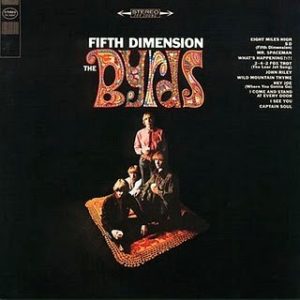
In 1966, The Byrds went psychedelic and turned toward acid rock, as many other bands also did that year. Their third album, Fifth Dimension, features the acid rock classic "Eight Miles High." Although this is their all-time greatest song, the album is less consistent that its two predecessors. Other standouts on the album are "5D" and "Mr. Spaceman." Most of the rest of the album is pretty much filler, and for the first time does not contain any songs written by Bob Dylan.
1967 saw the release of Younger Than Yesterday, another album that features psychedelic material. It is a much stronger album, featuring many great tracks. "So You Want to Be a Rock and Roll Star" is a good-natured slap at The Monkees. "Have You Seen Her Face" and "Renaissance Fair" are great songs in the vein of "Eight Miles High" from the previous album. With "My Back Pages," The Byrds once more dip into the Bob Dylan songbook to come up with yet another masterpiece. "Everybody's Been Burned," a David Crosby composition, is one of the most hauntingly beautiful and mysterious songs ever recorded. This song is used effectively in Aquarius, a TV show from 2015 that portrays a fictionalized account of the two years leading up to the Manson Family murders.
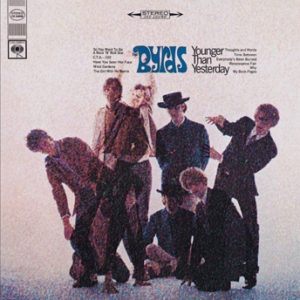
Younger Than Yesterday also contains two songs that helped to create a new genre, country rock: "Time Between" and "The Girl With No Name." Beginning with their next album, the country and western influence would become much more pronounced; they would increasingly feature more country rock, and even pure country and western songs on their albums.
The Notorious Byrd Brothers, their fifth album, is a mix of psychedelic and country rock. It might not be too much of a stretch to call it "acid country," as some of the songs incorporate both influences.
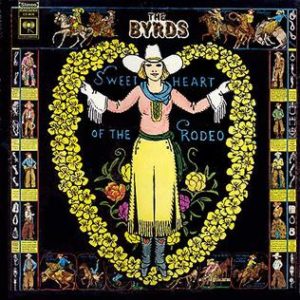
With Sweetheart of the Rodeo, also released in 1968, The Byrds went "all-in" for country music. The album was partially recorded in Music City, U.S.A., itself, Nashville, Tennessee. After finishing their sessions there, they performed at the Grand Ole Opry, where they were greeted with boos and catcalls from the audience, who derided them for being a bunch of long-haired hippie communist punks. They also mocked The Byrds with calls of "tweet, tweet, tweet" while they played "Sing Me Back Home," a Merle Haggard song. They also appeared on the program of Nashville disc jockey Ralph Emery, who made fun of his guest throughout the interview, deriding their version of Bob Dylan's "You Ain't Going Nowhere" as "Mediocre." The Byrds responded to this by writing a song "dedicated" to him called "Drug Store Truck Drivin' Man." The song contains a whole load of Redneck stereotypes, including the opening line, "He's a drug store truck drivin' man; He's the head of the Ku Klux Klan..." When Joan Baez performed the song at Woodstock, she dedicated it to Ronald Reagan, who was governor of California at the time.
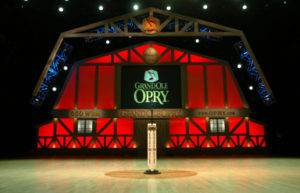
Despite being so badly disrespected in Nashville, The Byrds were later credited for their role in the creation of the country rock genre.
With their next album, Dr. Byrds and Mr. Hyde, the band returned to the "acid country" of The Notorious Byrd Brothers, as it features songs from both genres. This album did not fare well, as it became their lowest charting album. Aside from "Drug Store Truck Drivin' Man," it features no standout tracks.
The Byrds' fortunes picked up in 1969 with the release of Ballad of Easy Rider. This was due primarily to the album's being linked with the movie Easy Rider, which came out around the same time. The title song was the theme song for the movie. It also features another Dylan song, "It's All Over Now, Baby Blue," as well as a great song "Jesus Is Just Alright," which would later be covered by The Doobie Brothers.
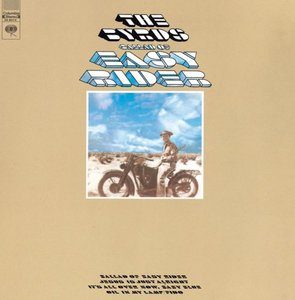
Untitled, from 1970, is The Byrds' only double album; the first disc consists of live material, including a sixteen-minute version of "Eight Miles High" that occupies all of Side 2. The other disc contains new songs recorded in the studio, the best of which are "Chestnut Mare" and "Just a Season." The band enjoyed the new-found popularity that came from this album and its predecessor.
Such popularity turned out to be short-lived. Byrdmaniax, from 1971, was not very well received. It didn't help that the album was "Phil Spectored" by their producer, Terry Melcher, who added strings, horns, and even a gospel choir to some of the songs without their consent. That same year, The Byrds responded by quickly recording another album, Farther Along. This was an attempt to show that they could produce a better album themselves. Both albums crashed and burned when they were released.
In 1973, the original lineup of The Byrds got back together and recorded what would turn out to be their final album of new material to date. Simply titled Byrds, it was released on the Asylum label. It was not well received.
Despite their mixed record of success, The Byrds remain today as one of the most influential bands from the 1960s. They created folk rock and were instrumental in the introduction of country rock. The created a body of work that, although inconsistent, contained many priceless gems that stand up well even today.
